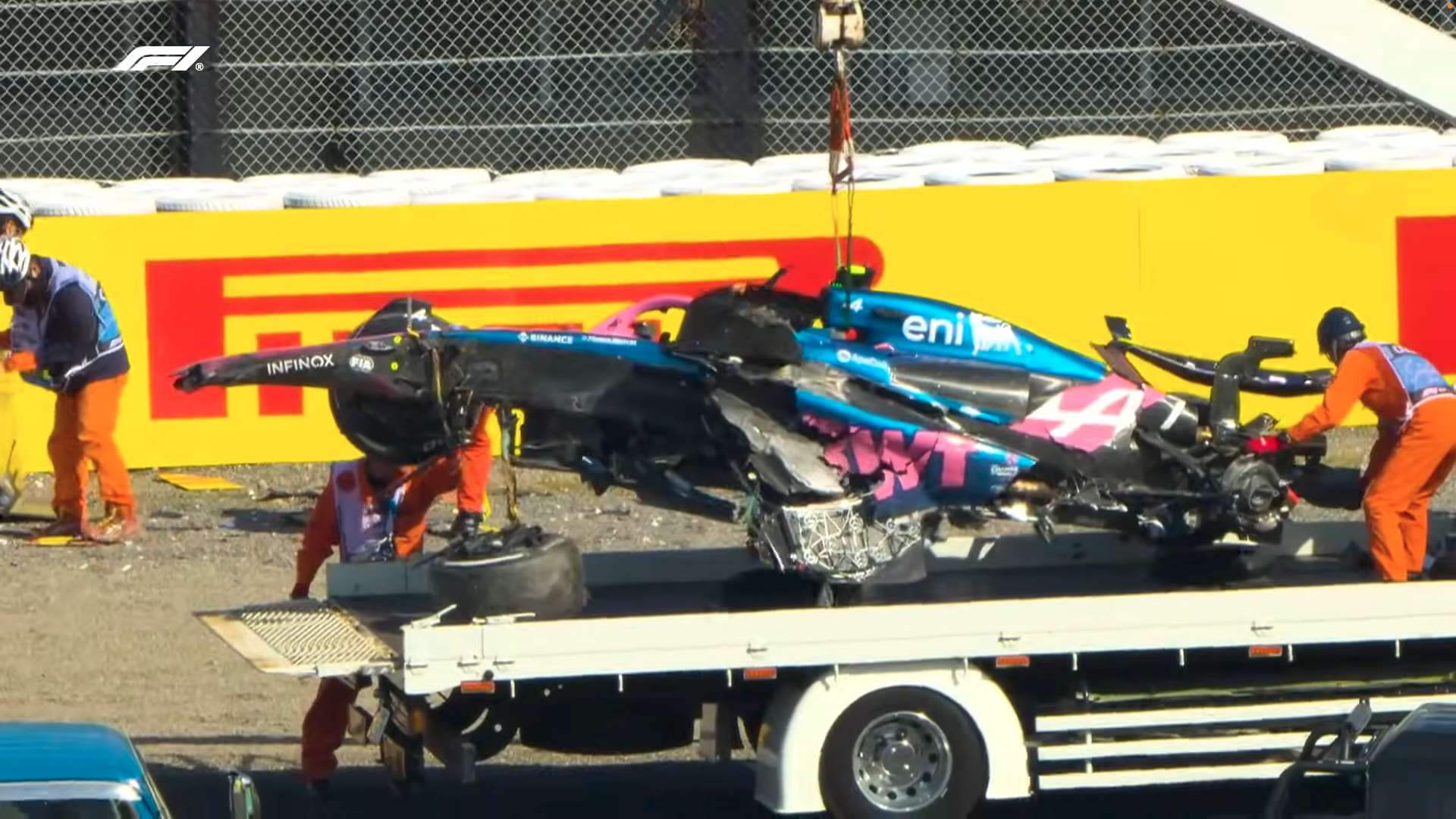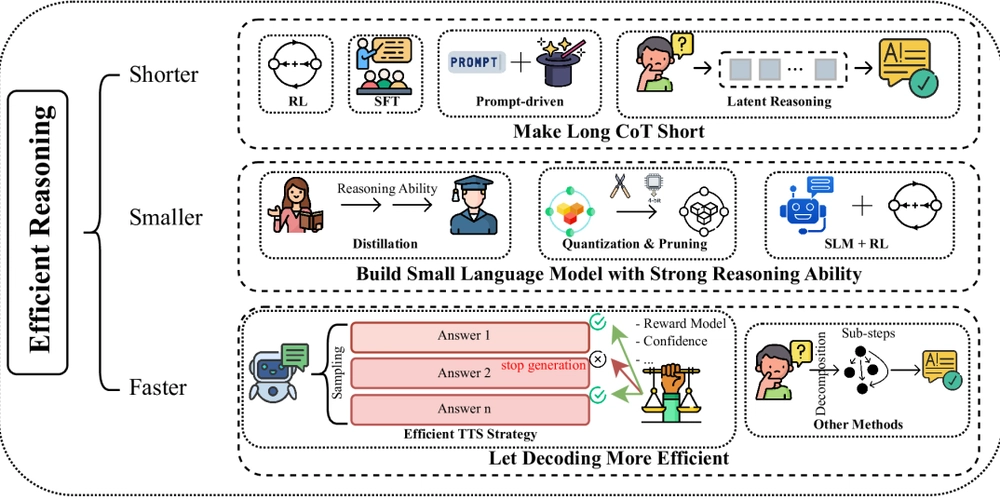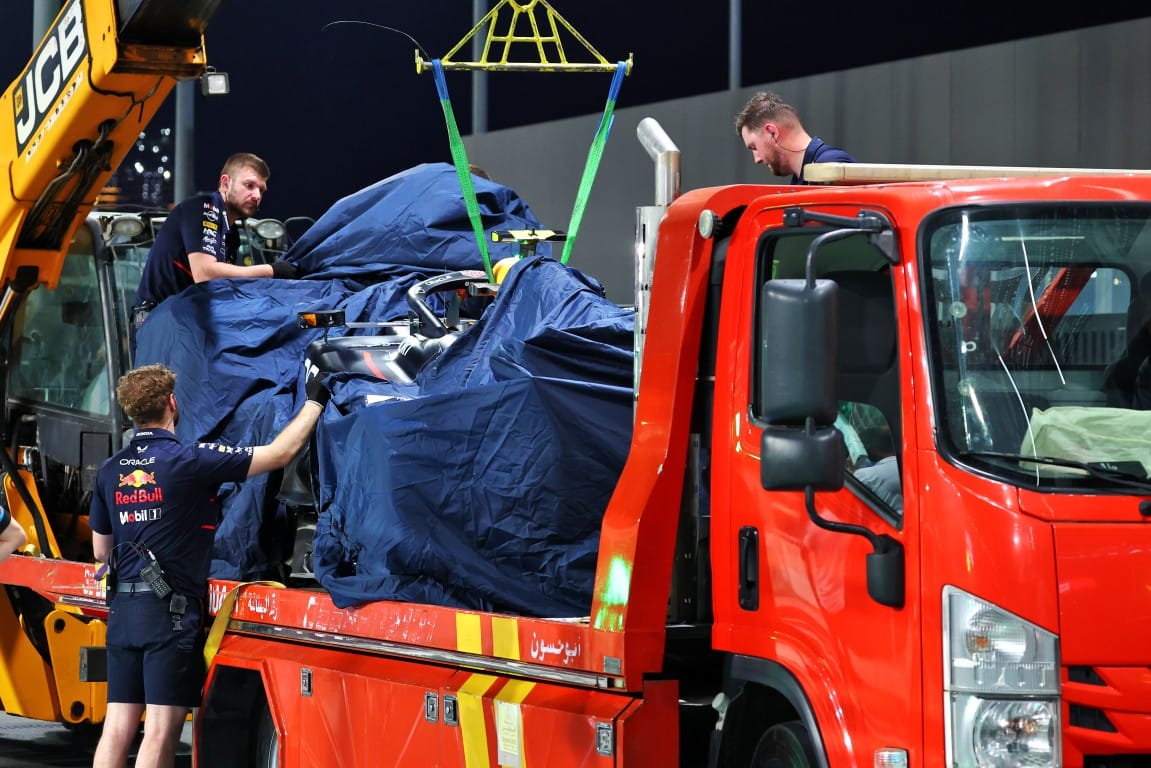Big F1 Crash at Suzuka Demonstrates the Importance of Aero in Seconds
If you ever need to explain how the aerodynamic difference of one flap can completely ruin an F1 car, Jack Doohan's crash makes it immediately clear. The post Big F1 Crash at Suzuka Demonstrates the Importance of Aero in Seconds appeared first on The Drive.

The second practice session before Formula 1‘s Japanese Grand Prix at Suzuka Circuit had multiple wipeouts, but Alpine driver Jack Doohan suffered a particularly big one. His car came into Turn 1 at speed, in control, until the rear suddenly gave up grip and the car violently flung off the asphalt and into a wall. Doohan walked away, thankfully, but the car was severely mangled.
The wreck happened roughly 10 minutes into the second hour of practice early Friday, ahead of Sunday’s main event. F1’s official highlight reel explains the culprit, but YouTuber yelistener broke down the incident in further detail with some extrapolated telemetry that I found even more interesting to look at.
Doohan’s problem, as the announcers and eagle-eyed viewers will have noticed, was not that he took the turn too quickly, but that the car’s Drag Reduction System (DRS) was still activated when it shouldn’t have been.
Modern F1 cars have air flaps in their rear wings that drivers can put up or down, depending on when they need more downforce. On straightaways, for example, those flaps are flipped down to create a slot in the rear wing that improves straight-line speed, at the expense of reducing downforce and, therefore, cornering grip. It’s really important that DRS is deactivated upon corner entry, then, or else the car’s going to be a handful, to put it lightly.
The green lights visible on Doohan’s steering wheel indicate when DRS is active, meaning that slot is open. The fact these lights don’t disappear when Doohan enters Turn 1 is the first sign of trouble. Before you know it, his Alpine is perpendicular with the track. “No rear grip, car spins” is a no-kidding cause-and-effect situation of course, but it’s eye-opening to observe how instantaneously the car goes from composed to crashy when the driver expects downforce that isn’t there.
Aerodynamics matters in almost any car, but at the speeds F1 drivers pull, it’s everything. If you ever need to show anyone a prime example of what that looks like, just show them that clip.
Got any high-speed aero insights for us? Drop us a line at tips@thedrive.com.
The post Big F1 Crash at Suzuka Demonstrates the Importance of Aero in Seconds appeared first on The Drive.







































































